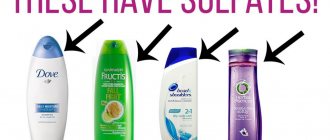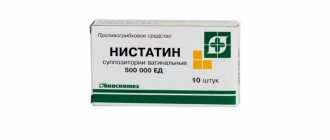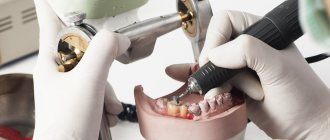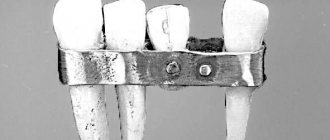Home / Food additives (E) / Preservatives (E-200 - E-299)
Back
Published: 07/25/2016
Reading time: 5 min
0
3067
Having thoroughly studied the properties of the preservative E285, Russian scientists came to the conclusion that this substance cannot be used in the food industry. It has extremely negative effects on the human body.
However, Borax is widely used in other industrial applications. Let's figure out what kind of substance this is and what properties it has?
- Substance names
- Type of substance
- Properties
- Main manufacturers
- Package
- Application
- Benefits and harms
What were you looking for and why?
As part of the “Slimes” special project, we conducted surveys on social networks, received many letters - and understood what consumers care about.
Top 7 questions for concerned parents:
1. Do slimes contain potentially dangerous and toxic substances?
2. Is slime a dangerous chemical?
3. Slime can cause allergies and burns. This is true?
4. Is a strong smell a sign of danger?
5. What does the marking say?
6. Is slime
a breeding ground for pathogenic bacteria?
7. Who is responsible for the distribution of potentially unsafe homemade slime?
In order to answer these and other questions, both industrially produced and homemade slimes were purchased, distributed on the Internet and through specialized retail chains. It was important for us to show the results in comparison. The toys tested were produced in Russia, Ukraine and China.
The price range ranged from 55 rubles (Fix Price) to 903 rubles (Poopsie), with an average price of 292 rubles. At the same time, four violations were found for the most expensive product.
To develop the research program, the standards for children's toys TR CU 008/2011 “On the safety of toys” and similar products were taken into account in order to cover the entire range of indicators.
How to make slime: 17 recipes with and without chemicals
Slime can be made in different ways using chemicals and improvised materials. Each parent will choose the appropriate homemade slime recipe for themselves.
From dry alcohol
Description. It turns out to be a real slime, hardly distinguishable from a store-bought one. The mass does not stick to your hands and retains its shape. The composition is completely chemical based.
What to prepare:
- polyvinyl dry alcohol - 30 ml;
- dry borax - one tablespoon;
- water - 400 ml (300 ml for alcohol and 100 ml for borax);
- dyes - by eye;
- essential oil for a pleasant smell - three to five drops.
How to do
- Following the step-by-step instructions on the package, dilute the dry alcohol with water.
- Without ceasing to stir, heat the solution in a water bath until a viscous state forms.
- Remove and cool.
- Dilute borax in half a glass of water.
- Mix solutions of alcohol and borax in a 3:1 ratio.
- Add coloring and flavoring.
PVA + starch
Description. The result is a viscous mass that can be stored for a week in a closed container. Due to the PVA content in the recipe, it is better not to give slime to children under five years of age.
What to prepare:
- starch - 25 g;
- water - 50 ml;
- PVA glue - 25 ml;
- food coloring;
- tight resealable bag.
How to do
- Dilute the starch with water and let the powder dissolve.
- Pour the starch solution into a bag.
- Add a little food coloring and stir.
- Pour glue into the mixture and shake.
- Knead the mixture through the bag until a clot forms.
- Open the bag and drain off excess liquid.
- Take out the slime and blot it with a napkin.
To make the slime jump, you need to add hydrogen peroxide to the recipe. Just a few drops are enough. Keep in mind that the more starch solution, the harder the mass becomes. Too much glue will make the toy stick to your fingers and surfaces.
Video on the topic
From shaving foam
Description. This recipe produces a soft slime that resembles marshmallows. The mass is kneaded “by eye” until smooth.
What to prepare:
- shaving foam - one bottle;
- PVA glue - 200 ml;
- dye (optional).
How to do
- Pour glue into a suitable container.
- Drop a little dye and distribute evenly throughout the liquid.
- Squeeze out some foam and stir.
- Add foam until you get a soft mass that resembles an elastic marshmallow.
PVA should be of good quality, creamy, without lumps or impurities. Check the expiration date before use. Expired glue will affect the consistency of the slime.
Borax based
Description. A simplified version made from borax. Dye is added as desired.
What to prepare:
- borax - one tablespoon;
- water - 100 ml;
- PVA glue - 100 g;
- dye - three to four drops;
- capacity;
- plastic bag.
How to do
- Make a borax solution in a glass.
- Pour glue into the mixing container.
- Add a few drops of dye.
- Gradually pour the prepared solution into the glue.
- Stir until a viscous mass forms.
- Remove the clot, blot it with a napkin, and place it in a bag.
- Stir for about five minutes and drain off any excess moisture.
With air freshener
Description. Not the most useful composition. But the slime turns out soft, airy, and does not stick to your hands.
What to prepare:
- PVA glue - one tube;
- any paint (for example, acrylic in a tube);
- air freshener.
How to do
- Pour the required amount of glue into the container.
- Tint and stir to distribute the color.
- Spray with aerosol several times so that the glue begins to curl while stirring.
- Mix with a spoon or your hands until the mixture stops sticking.
If the slime doesn't work, the problem is most likely with the air freshener. A suitable aerosol should not foam when sprayed.
Made from silicate glue
Description. The result will be a fairly dense slime that will not stretch in length. The recipe is suitable for creating a “bouncer” that bounces well off surfaces.
What to prepare:
- alcohol - 100 ml;
- silicate glue - 100 ml;
- dye or glitter - optional;
- capacity.
How to do
- Mix glue and dye.
- To make the ball look more impressive, mix transparent glue with glitter.
- Without ceasing to stir, add a little alcohol.
- Add alcohol to desired thickness.
- Leave the mixture for 20 minutes.
- Remember the mass with your hands and gather it into a ball.
- Roll a ball, try hitting it on the floor: if everything is done correctly, it will bounce off.
Alternative “silicate” options are with washing liquid or sodium tetraborate. The proportions of liquid and glue are 1:1. Mix until thick. If dry tetraborate is used, then you first need to make a solution (a tablespoon per glass of liquid). Glue (125 ml) is mixed with a glass of water and then with a borax solution. The result is a jelly-like transparent mass.
Shampoo + “Titan”
Description. You will need any construction adhesive with sufficient viscosity. The ideal option is Titan.
What to prepare:
- any hair shampoo - 50 ml;
- "Titan" - 150 ml;
- tight package.
How to do
- Pour shampoo into the bag.
- Add glue, close the bag, stir.
- Remove the formed clot and drain off the excess water.
- To get a large slime, increase the dosage; there should always be more glue.
The glue can be replaced with a starch solution - the slime will not be so toxic. There should be two times less shampoo than solution. After mixing, the mass is put into the refrigerator for 12 hours.
Video on the topic
From table salt
Description. A short-lived slime that you can play with once. The consistency is more like jelly than stretchy chewing gum.
What to prepare:
- thick shampoo - three tablespoons;
- salt - by eye;
- dye;
- mixing container.
How to do
- Pour shampoo into a bowl.
- Add a little salt and stir the liquid.
- Determine readiness by thickness: the slime is viscous and does not stick to the walls.
- If desired, tint the mixture with dyes.
An alternative to the “salty” mass is a slime made from shampoo and sugar. Not all experimenters get it right the first time. You need to mix thick shampoo with a small amount of sugar. The mixture is placed in the refrigerator for two days or in the freezer for several hours. After time, you should get a plastic mass.
From sodium tetraborate
Description. A rather labor-intensive way to create slime that requires heating.
What to prepare:
- glue stick - four pieces;
- sodium tetraborate - one teaspoon;
- dye (gouache or brilliant green) - five to ten drops;
- water - by eye;
- glass bowl.
How to do
- Remove the glue sticks from the pencils and place them in a bowl.
- Microwave for a few minutes to form a viscous mass.
- Add dye.
- Stir with a spoon.
- Dilute sodium tetraborate with water to a viscous mass, add to the glue.
- Stir the mixture to the desired consistency.
Instead of a pencil, you can use regular transparent stationery glue. The borax solution is poured into 30 g of glue until a homogeneous mixture is formed. The mass turns out viscous and transparent even after adding dye.
Video on the topic
With nail polish
Description. The result is a stretchy slime that does not stick to surfaces. The more varnish, the richer the color. It is recommended to use water-based varnishes without a strong unpleasant odor.
What to prepare:
- nail polish - a few drops;
- PVA glue - one bottle;
- sodium tetraborate - one tablespoon;
- water;
- mixing bowl.
How to do
- Pour the glue into a bowl.
- Add some varnish.
- Stir until the mixture is uniform in color.
- Dilute the colored glue with water in a 1:1 ratio.
- Dissolve borax in 200 ml of liquid.
- While stirring, pour the solution into the mixture in a thin stream.
- Stir until a sticky consistency forms.
From dishwashing detergent
Description. There is no specific dosage of ingredients, so you should add components gradually, controlling the density. The viscous mass can always be diluted with water.
What to prepare:
- dishwashing detergent - a third of a glass;
- baking soda - by eye;
- dye - a few drops;
- Bowl.
How to do
- Pour dishwashing liquid into the container.
- Sprinkle in some baking soda powder.
- Stir and add ingredients if necessary.
- Add some dye.
- Knead the mixture to the required consistency.
Video on the topic
From soda solution
Description. One way to make slime without sodium tetraborate. “Soda” slime is short-lived, you can play with it for a couple of days. Due to the presence of PVA, it is better not to give the toy to small children.
What to prepare:
- baking soda - one heaped tablespoon;
- glue - 50 g;
- warm water - half a glass;
- liquid dye - two to three drops;
- containers - two pieces.
How to do
- Dilute the glue with half of the prepared liquid.
- Add dye.
- Make a soda solution from the remaining liquid.
- Mixing thoroughly after each portion, gradually pour the soda solution into the diluted glue.
- Knead into a homogeneous mass.
Video on the topic
From laundry liquid
Description. You will need a gel-like product, not a powder. The grains will only give a soap solution.
What to prepare:
- laundry liquid - two tablespoons;
- PVA glue - a quarter cup;
- dye - five to six drops;
- gloves;
- capacity.
How to do
- Pour glue into a container and add dye.
- Mix, add cleaning liquid.
- Stir with a spoon.
- Put on gloves and knead the mixture with your hands.
- The slime will be ready when it reaches the consistency of elastic dough.
Video on the topic
With soap and toothpaste
Description. Toothpaste slime is plastic and smells fresh. It is not necessary to add dye if the soap liquid has its own color.
What to prepare:
- liquid soap - 20 ml;
- toothpaste - 20 ml;
- flour - five tablespoons; bowl.
How to do
- Squeeze the paste into a container and mix with soapy liquid.
- Mix into a homogeneous mixture.
- Gradually add flour, stirring thoroughly after each addition.
- Knead with your hands, periodically wetting them so that the mixture does not stick.
Instead of flour, you can use Titan or any other polymer glue as a binder. There should be about twice as much toothpaste. For example, if 100 g of paste is used, then the glue should be 40-50 g.
Plasticine + gelatin
Description. You can make slime without glue yourself using modeling mass. You won’t get a perfectly stretchy slime; the mixture will look like a plastic handgam.
What to prepare:
- gelatin - 50 g;
- plasticine - 100 g;
- water;
- tin container for mixing - two pieces.
How to do
- Dilute gelatin granules with water in a ratio of 1:2, leave for one hour.
- Heat the solution over low heat (do not bring to a boil), cool.
- Heat 50 ml of water. Add well-mashed plasticine pieces.
- Stirring constantly, bring the mixture to a uniform liquid state.
- Combine both solutions and mix.
- Place the homogeneous mass in the refrigerator for 30 minutes.
A plasticine handgam cannot be played like a ball. The mixture leaves greasy stains on wallpaper and other surfaces.
Video on the topic
Made from flour (for kids)
Description. Even kids can quickly make slime without PVA and sodium. It is recommended that mothers take note of the recipe, since the slime is made from completely edible materials.
What to prepare:
- hot and cold water - 50 ml each;
- flour - 400 g;
- natural dye.
How to do
- Sift the flour, add first cold and then hot (but not boiling) water.
- Add coloring if desired and knead the dough.
- Stir until smooth.
- Place in the refrigerator for four hours.
With iron filings
Description. Magnetic handgam is fun to play with. Like the pseudopods of an amoeba, parts of the mass are drawn to the magnet.
What to prepare:
- iron filings - teaspoon;
- PVA glue - 30 g;
- boric acid - half a glass;
- magnet.
How to do
- Mix the glue and acid (the more liquid, the thicker the mixture).
- Add shavings.
- Knead until a viscous consistency.
- Take a magnet and test the action of the slime.
To make the toy glow in the dark, it is recommended to add phosphor or fluorescent dye. You can also add small glitter, multi-colored foam balls, and confetti into the slime while kneading.
Briefly about the research results
Let's say right away that there are no serious violations. There is no excess content of hazardous substances, no violations of irritating effects on the skin and eyes.
The main comments were related to labeling, pungent odor, and microbiology. Four brands of slime are not recommended for purchase due to their strong odor: Slime Vime, Attivio, Ninja and Slime by Lenetta. Poopsie slime is not recommended due to its flammability. Three slimes were found to have packaging inconsistencies. In five cases out of 14, labeling violations were detected.
One of the serious conclusions made by Roskachestvo experts is that the market for these toys is outside of legislative regulation. There are no Russian standards for this type of product. Not all slimes that are on sale are certified for compliance with the requirements of TR CU 008/2011. However, there are manufacturers who certify their products as “toys for children”, and then such slimes are subject to appropriate regulation and compliance with TR CU 008/2011. Nine of the slimes we tested were declared with full markings and with an EAC mark, which indicates compliance with TR CU 008/2011. But only the following brands stood out among them: Mr. Boo, Monster's Slime, Mega Mix. And part of the market is slime, which children-slimers mix at home and sell them - either at school, or online, or through specialized retail outlets. Such goods can be sold, for example, as souvenirs.
Algorithm for creating slime
- Pour seven tablespoons of sour milk into a container.
- Add one spoon of acetic acid and mix everything until any lumps and clots that may appear during the mixing process are removed.
- After such a reaction, a precipitate forms; it is necessary to use a sieve and strain the mixture. The entire liquid part of the mixture must leave the reaction zone.
- To the resulting sediment you need to add a quarter spoon of soda. A reaction will begin with the release of carbon dioxide.
Now the slime is ready. When carrying out this reaction, you must be extremely careful, since the experiment uses acid and alkali. Safety precautions must be observed when conducting such experiments. Milk contains casein, which, when interacting with acid, creates this mass.
Good luck in making and storing slime! Have fun and have amazing emotions!
What is slime and what is it made of?
Today, slime is not just a mysterious “slime” or a sticky mass of polymer components. This is a whole mini-industry of goods for children and teenagers. In this system, manufacturers of ready-made slimes, as well as raw materials and components for sliming, the slimer-influencers themselves, and specialized retail chains coexist. Hundreds of thousands of children and teenagers buy or create new designs themselves, and parents become hostage to their passion. And they are quite rightly concerned about how safe this “toy” is.
Main components of slime
- Polymer base
PVA glue
- the basis of a home toy. Its main component is polyvinyl acetate, a low-toxic compound. Manufacturers use polyvinyl alcohol or polyvinyl acetate as a polymer base. There are several types of glue that slimers use:
PVA stationery
(“Red Ray”, Elmer’s, Dr. Fan, Erich Krause, “Moment” PVA). These adhesives consist of polyvinyl acetate, vinyl acetate and a plasticizer. The last two components have a 3rd degree of danger (1st degree is a very dangerous substance), but their proportion in the glue is very small to pose a danger. Therefore, PVA glue is classified as a low-hazard substance (in accordance with GOST 12.1.007-76 “System of occupational safety standards. Harmful substances”). And although manufacturers indicate “Non-toxic” and “Safe for children” in the labeling, the safety data sheet for these products indicates that when working with such glue it is necessary to wear gloves and safety glasses, and the room must be ventilated. Do not allow glue to get into your eyes. Ingestion may cause poisoning.
PVA-M
(“Moment Stolyar” PVA, Goodmark PVA-M, Stick Up, “Contact”). Consists of polyvinyl acetate dispersion, aqueous dispersion, plasticizers and water. Refers to low-hazard substances. In case of contact with eyes and skin, it causes mild irritation. Avoid ingestion. When working with this glue, it is advisable to use gloves and goggles.
- Activators
Boric acid.
In 1987, it was banned in the USSR as an antiseptic. Now sold in pharmacies. Found in some recipes on the Internet as an activator. And although the body has resistance to boric acid, if ingested, a small amount of it may have time to break down, which will lead to poisoning. Children cope worst with the effects of acid. In acute poisoning of people, it affects the brain, mucous membranes and skin. Not recommended for use in children.
Sodium tetraborate (borax or borax powder)
– causes acute irritation to the skin and eyes; with prolonged or repeated exposure to mucous membranes, it can cause damage to organs. Wear safety glasses and gloves when using. It must be used in ventilated areas. You can get poisoned even by inhaling dust when working with powder.
A solution containing 20 g of sodium tetraborate in 80 g of glycerin
– Irritating to eyes, skin and respiratory tract. Use only with gloves and in a ventilated room: the solution evaporates at 20 degrees, and in a short time such a concentration of the substance in the air can be created in the room that will lead to poisoning. If the solution gets inside, it is life-threatening.
Liquid for lenses
– also contains sodium tetraborate, but in a much smaller amount (however, if there is very little of it, the liquid will not be able to activate the slime).
Usually added along with baking soda. Attention
It must be remembered that all of these are drugs that can be safe in small doses, but pose a threat when used non-medically. The greatest risk of ingesting sodium tetraborate is through inhalation. Use these substances only in the presence of adults, in a well-ventilated area and when using gloves, glasses and a mask.
In addition, slimes may contain:
Water
– purified or distilled. Not used in all slimes.
Food coloring, flavorings, fillers
– are needed to give the mixture a certain color or design. In addition to these components, shaving foam, spices, guar gum and other substances can be used to make the toy unique.
Sodium tetraborate price and where to buy it
In the pharmacy, sodium tetraborate is sold without a prescription in the form of a glycerin solution, packaged in dark glass bottles of 30 and 50 ml. The shelf life of the drug is 2 years, the cost varies from 15 to 80 rubles .
Borax powder is sold in hardware and construction departments and in gardening stores in a variety of packages from 20 g to 50 kg. The cost of packaging depends on the manufacturer, weight and degree of purification and varies from 75 rubles/kg to 170 rubles/kg .
Why slime attracts children: the opinion of psychologists
Svetlana Klyuvaeva
child psychologist, head of the child psychology club “Heart”
– Slimes can relieve stress and work as analogues of anti-stress toys. They, of course, also develop fine motor skills in a child, but children develop them in general from many things - everything that falls into their hands - so there is no need to talk about any special benefits of slimes specifically. They attract the child with their shape, pleasant sensations for the hands, and unusual tactile qualities.
Part of their popularity is due to trendiness. Nowadays the trend is to show what you have done yourself. Therefore, the process of making a product causes cravings in children. Designer slime is both an original toy and an easy way to make money. Let's remember how in American films children sold homemade lemonade on the lawn of their house. Only the form changes: today it’s slime, tomorrow it’s something else.
Children simply follow adults. Since adults went to YouTube to show their lives, creating a trend, children followed them. You did something and instantly received feedback, feedback in the form of likes and comments. This is a phenomenon that we need to put up with, it is already part of our life, it will not go away anywhere.
Read how a psychological examination of slimes is carried out HERE.
Can slimes develop psychological dependence? Read HERE.
Who would benefit from this toy?
Such anti-stress is simply necessary for people working in the service sector or in the social sector, because working in these industries is always stressful. If you do not discharge your inner consciousness every day, an explosion may occur that will affect loved ones.
People who work for the benefit of their family and homeland very often forget to think about their health, thereby destroying their body and its vital abilities. In order for the nerves to remain in order, and health to please, strength not to leave the body, it is necessary to monitor not only the nervous characteristics, but also the physical condition of the body. The main problem of modern society is physical inactivity, which means inactivity and, most often, a sedentary lifestyle. And to prevent this from happening, just read how to make slime from sodium tetraborate and glue, after which you need to go and look for these ingredients at home, but if there are none, then you can go to the nearest pharmacy, where you will probably find tetraborate. And there is glue in stationery supplies. We need to breathe more fresh air and find new interesting activities.
Now, no one who knows how to make slime from sodium tetraborate and glue will suffer from stress at work.
It's better to smile, make slime and enjoy this toy. After all, such slimes improve your mood and help you cope with mental problems.
Not many people remember such a toy as slime from their childhood, but today’s children also love not only to play on computers and tablets, but also to conduct experiments and discover something new. It is worth inviting your child to try making such a toy himself, because the recipe is simple and even a child can handle it, of course, under adult supervision.
Is slime a dangerous chemical?
Products from 14 brands were tested to contain excess levels of 29 potentially hazardous chemicals, including alcohols, toluene, formaldehyde, mercury and arsenic. Let us say right away that no violations were found.
The greatest concern among consumers was the boron content in slimes. Foreign studies
showed that the boron content in the products of some manufacturers was four times higher. Boron can cause rashes on the skin of your hands. However, boron in its pure form is not included in slimes. Boron is found in the form of various compounds, depending on the composition of the slime. One such compound is sodium tetraborate, a salt of boric acid. Tetraborate or another boron component is added to the polymer medium. Then a reaction occurs with the polymer - due to this, slime is formed. When mixing occurs, the tetraborate binds to the polymer and goes into an inactive form, becoming a neutral organic boron. Unreacted tetraborate may react on the skin. Therefore, Roskachestvo experts determined the content of sodium tetraborate in the toy, focusing on the content of this substance in water (according to GOST 31949-2012). According to the test results, no content exceeding 3% of the mass fraction was found in any product.
– Slime is based on a polymer, and often manufacturers do not even indicate on the label what this base consists of. But we do not find elemental boron, as we find it in the periodic table, outside of any compounds in slime at any stage. Boron in slime is already in a bound state - we do not detect it in the form of a gas unsafe for health. Even when borax is heated, boron will not be released. It would be incorrect to determine the presence of elemental boron in slime,” comments Dmitry Kruzhkov, laboratory assistant at the conformity assessment department of the Federal Budgetary Institution “URALTEST”.
Substance names
This sneaky food additive goes by many names.
Here's the full list:
- Borax,
- Borax,
- sodium teraborate,
- Sodium Tetraborate Decahydrate,
- Sodium tetraborate 10-water,
- Sodium borate pyro 10-water,
- Methylpropionic acid E-285,
- E285,
- Sodium Tetraborate
- Borax.
Does slime cause allergies and irritation?
Experts have conducted a range of tests to determine whether slime is truly toxic. All toys studied are in accordance with TR CU 008/2011 and the Unified Sanitary-Epidemiological and Hygienic Requirements for Goods Subject to Sanitary-Epidemiological Surveillance (Control). This means that they do not have allergenic properties and do not irritate the mucous membranes of the eyes and skin.
In addition, the tests revealed the potential for acute poisoning. No products were considered dangerous. The substances from which slimes are made do not accumulate in the body: if a child plays with slime for a long time on an ongoing basis, the components of this slime do not have the necessary cumulative effect to cause poisoning.
History of creation
Handgam was first introduced in America back in 1976. The company that created this toy invested a huge amount of money in promoting the product, but in those years such an invention did not gain popularity. But nowadays everyone knows about such a wonderful toy, more and more people are trying to make it themselves, because in the process of creation you can not only get a sea of new impressions, positive emotions and emotions, but also new knowledge in the field of chemistry. And when using slime, you can gain knowledge in the field of physics and find out what feature is found in a non-Newtonian liquid.
Is slime a breeding ground for pathogenic bacteria?
Not a single slime out of 14 brands contained staphylococcus, Pseudomonas aeruginosa or enterobacteria. But immediately in two brands of slime, excesses in the number of microorganisms were recorded. The manufacturers of these products have not indicated at what age their toy can be given to children. And although it is unlikely that parents will allow a child under one year old to play with slime, experts took into account the lack of warning labels about age. They proceeded from the premise that slime could fall into the hands of a one-year-old baby, so the standards were taken for children under one year of age.
According to TR CU 008/2011, the total number of KMAFAnM microorganisms (mesophiles, aerobes and facultative anaerobes) should not exceed 102 CFU/g. This standard was exceeded six times in the Dobr Bobr slime, and 2.2 times in the Thelarek.ru slime. A significant content of viable bacterial cells indicates either insufficient heat treatment of raw materials by the manufacturer, or violations of sanitary standards, or unsatisfactory storage conditions.
But what kind of sanitary standards can we talk about if a significant share of the slime market consists of designer toys? The detected excesses in the number of microorganisms are food for thought for parents. If a child purchases slime of unknown origin or makes it himself, there is no guarantee that such a toy is safe from a microbiological point of view.
Yeast and mold were found in products from the same brands. In Dobr Bobr, 1.6 × 103 CFU were found in one gram, and in Thelarek.ru - 1.5 × 105 CFU.
Even a small amount of mold and microorganisms can cause allergies or skin irritation, and the toy itself will simply deteriorate quickly. Slime can be infected with fungal spores during production, and it itself is a good moist environment for the further development of the fungus.
Attention! If you find fungus on your slime, immediately throw it away along with the packaging.
There is no need to try to cut off the infected part. It is advisable to dispose of all dishes where the toy was stored to prevent the spread of mold.
Slime made from sour milk
Such an unusual toy will not require any costs from the manufacturer, because milk is found in everyone’s home, and even more so, milk is not stored for so long, so it is guaranteed to go sour at some point. If this happens, then there is no need to rush to pour the milk into the toilet, because a sour milk product can make a wonderful toy. This recipe requires only a few ingredients:
- Milk that has gone sour.
- Acetic acid.
- A sieve or some kind of filter.
- Soda.
What does the pungent smell of slime mean?
If during manufacturing the proportions were violated or unnecessary, low-quality components were added, such slime will have a pungent odor. The intense smell in slimes is caused by the high content of flavorings.
According to TR CU 008, toys for children over three years old (it was assumed that no parents would give slime as a toy to a child under this age) should not have an odor intensity of more than 2 points (where 0 is no odor, and 5 is a suffocating pungent odor) . Slime from 4 brands had a pungent odor of 3 points: Slime Vime, Attivio, Ninja and Slime by Lenetta.
When choosing slimes with a strong smell, it is best to avoid them. They may be potentially unsafe.
Tips for making and storing slime
- Slime made from sodium tetraborate and glue should not be too liquid, because if it has a liquid consistency, then such a toy will not bring enough pleasure, because it will stick to your hands. It is necessary to bring the slime to such a consistency that it does not stick to your hands, but at the same time, when held for a long time, it begins to flow.
- You should only store the slime in a box that can be sealed very tightly, since the slime can dry out very quickly in the air.
- How much does sodium tetraborate cost? Absolutely inexpensive - from eight to twenty-four rubles.
- All slime recipes are based on tetraborate and glue, so if you wish, you can experiment and create your own slime recipe, which can be anything you want.
How to make slime from office glue and sodium tetraborate? Yes, according to the same recipe. Everything is very simple, and most importantly, if you choose the right brand of glue, then anti-stress can acquire a variety of textures and types that the manufacturer will like. Making slime is an art where the personal qualities of the manufacturer, his outlook on life and imagination can be embodied.
Water is not slime's friend
Roskachestvo experts conducted two tests on how slimes behave in a humid environment. Dye migration was detected in slimes: Mr. Boo, Fix Price, Attivio, Slime by Lenetta. High-quality slime should not stain your hands.
Slime can dissolve partially or completely in water. If during play the slime gets into the water and remains there, then you risk being left without a toy: some slimes completely dissolve - especially in hot water. And, for example, slimes “Good Beaver”, Slime Vime, Slimedesign, Mr. Boo, Thelarek.ru will dissolve even in cold weather.
Advice
: It is important that the child plays with the slime with clean, dry hands. Low-quality slimes can stain hands and surfaces, and a number of artificial dyes can cause skin irritation.
In addition, the packaging of the toys was tested for strength and tightness. Poopsie's slime had the flimsiest packaging. It is not airtight and will not withstand falling or strong compression. Be careful: check your copy carefully.
We asked a dermatologist what rules should be followed when playing with slimes.
Larisa Alekseeva
therapist, dermatologist
– Slime as toys has more benefits than harm. But they should be given to children only at an age when they fully understand that such toys should not be put in their mouths or in their eyes. The optimal age in this case is from 5 years.
The main danger to hands in slime can be unnatural dyes. PVA glue is, in principle, harmless, like borax, but under no circumstances should it come into contact with the mucous membranes; it is necessary to prevent the slime from getting into the mouth. Dyes, especially unnatural ones, can cause allergic reactions, bronchitis and skin rashes. If a child plays with slime with clean, dry hands and on a special napkin or other clean surface, then the toy can be used for a long time without harm.
- If a child rolls slime on the floor or carpet, it is better to immediately throw away such a toy, without even trying to wash it.
- If a child has wounds or cuts on his hands, it is advisable not to play with slime. Getting borax into wounds can corrode them, lead to rashes, or cause a minor infection.
- Attention! Such toys are contraindicated for children with allergies, asthma and skin diseases.
Overall, this is a good anti-stress toy for a child.
Tatiana Butskaya
Chairman of the Council of Mothers, pediatrician, expert of the ONF
– This is a toy, and you don’t have to put it in your mouth. Here is one of the most important recommendations for parents. Slimes smell delicious, they are an attractive color, and you want to taste them. And it’s better to further scare the child by telling him that if the slime gets in his hair, he’ll have to cut his hair, and if it gets into the wallpaper, then dad will get angry. The child needs to be shown and explained what can and cannot be done with this toy. Using such examples, the child will understand why slime should not be put in the mouth or placed on the head.
Properties
| Index | Standard values |
| Color | white |
| Compound | sodium tetraborate |
| Appearance | crystalline substance |
| Smell | absent |
| Solubility | dissolves in cold water (1:25), boiling water (2:1), glycerin; does not dissolve in alcohol |
| Density | 1,73 |
| Other | antiseptic |
What does the marking say?
The marking is a good indicator of whether you are holding an industrial slime in your hands or a so-called original one, made at home. Toys from bona fide manufacturers must indicate:
- Date of manufacture.
- Manufacturer's name and location.
- Information for contacting the manufacturer/importer.
- Minimum age of the child for whom the toy is intended.
- EAC mark confirming product compliance with the standards of the countries of the Customs Union.
Five home-made toys did not have this information in the labeling: Slime Vime, Slimedesign, Thelarek.ru, slimeo.ok. Roskachestvo sent letters of claim to these distributors, and all companies have already responded, promising to make changes to the label. “Slime Superpower” does not have a warning label about handling the toy with caution.
So are homemade slimes really more dangerous than industrial ones?
Our research did not find any serious security violations in them. And although only three of these homemade slimes were found to have other violations, you need to remember that purchasing designer slimes carries certain risks. Their production process is not controlled in any way, and the products themselves are not certified.
Tatiana Butskaya
Chairman of the Council of Mothers, pediatrician, expert of the ONF
– It’s better not to buy homemade slimes. Parents should only buy slime that is certified or made from certified ingredients to ensure that the toy does not contain any hazardous substances. And even if a child wants to make his own slime from a kit, this kit must also have a certificate.
Each generation has its own toys. We collected candy wrappers and sold these collections. And our children now have the opportunity to make slime with their own hands - perhaps even a whole collection. Therefore, this hobby is not surprising. Especially if the child knows how to do something better than others. But I would still limit the sale of slimes between children, because it is not known where other children get the money to buy them. This needs to be looked at seriously.
Is it worth buying homemade slime?
As part of the study, experts from the Russian Quality System also checked several home-made toys. Despite the fact that no serious security violations were found, buying designer homemade slimes always carries some risk. Their production is not controlled by any regulations, and the products are not certified. To be sure of the safety of the toy, Roskoshestvo advises giving preference to slimes that are certified or made from certified materials.
Who is responsible for the distribution of potentially unsafe homemade slime?
Andrey Belousov
Lawyer, Candidate of Legal Sciences
– According to paragraph 4 of Art. 7 tbsp. 492 of the Civil Code of the Russian Federation, it is not allowed to sell a product without information about mandatory confirmation of its compliance with mandatory requirements ensuring its safety for the life, health of the consumer, the environment and the prevention of harm to the consumer’s property.
When selling goods, the seller brings to the buyer’s attention information about confirmation of the goods’ compliance with the established requirements by marking the goods in the prescribed manner with a conformity mark and familiarizing themselves with documents confirming certification. If at the time of sale of a product there is no certificate of conformity at the place where it is sold, certifying the safety of such a product, the guilty person may be held administratively liable.
If slimes are declared by the manufacturer for sale not as a children's toy, but as souvenirs or as glue products, they do not require certification and confirmation of conformity.
Therefore, it should be recognized that there is a gap in regulatory regulation regarding slimes, associated with the emergence of a new category of goods, a new “old” method of production (not industrial, but artisanal), in which we are not talking about mass production.
Application
In the last century, the effect of the preservative E285 on the human body was not sufficiently studied.
In this regard, the substance was actively used in the food industry, for example, borax was added to butter and margarine, used in the production of pasta and rice, and some semi-finished products. Now this additive is rarely used in the food industry. This is due to the adverse effects of this chemical on human health. In some countries, E285 is used in strictly limited quantities in the production of red caviar.
If you believe most studies, the food additive E131 does not cause harm to the body, since it is completely eliminated from the body.
Owners of a mini-bakery always face a dilemma: it is better to buy a ready-made set of equipment or each device separately. You will find useful tips in this article.
You will find all the detailed information about the preservative sodium sulfite (E221) here.











